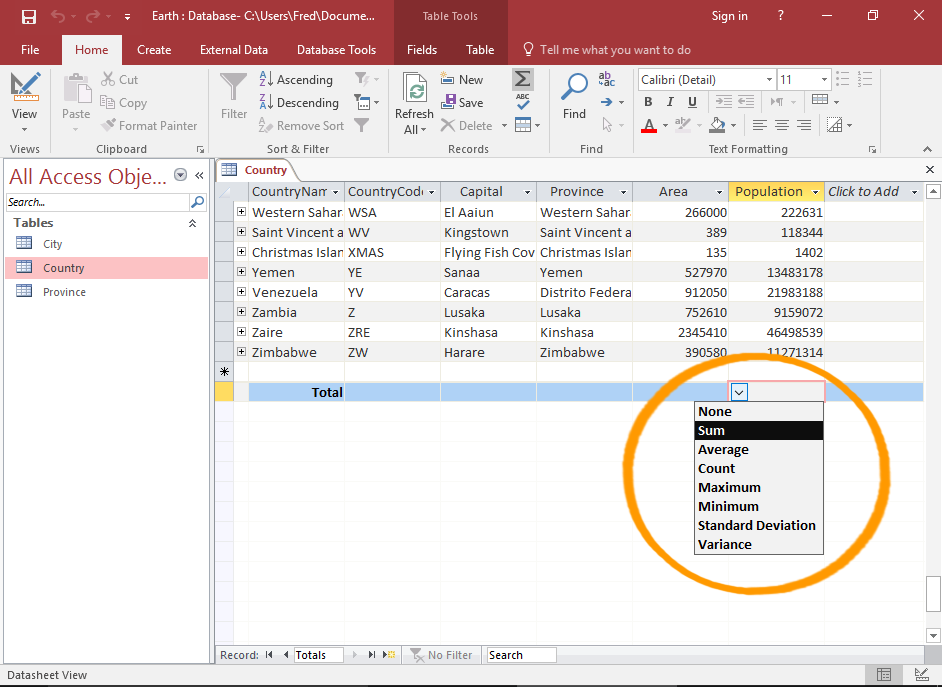
Microsoft Access 2016 offers a wealth of tools and features for data analysis and reporting, and among the most powerful are calculated fields and totals rows. Calculated fields enable users to perform calculations on data within queries, forms, and reports, while totals rows provide a convenient way to summarize and aggregate data. Whether you’re a business analyst crunching numbers or a project manager generating reports, understanding how to create and utilize calculated fields and totals rows in Access 2016 is essential for effective data analysis and reporting. In this comprehensive guide, we’ll explore the intricacies of creating calculated fields and totals rows in Access 2016, covering everything from basic calculations to advanced techniques and best practices.
Understanding Calculated Fields in Access 2016
Calculated fields in Access 2016 allow users to perform calculations on data within queries, forms, and reports dynamically. Calculated fields can include arithmetic operations, text concatenation, date manipulation, and more, enabling users to derive meaningful insights from their data. Whether you need to calculate totals, averages, percentages, or perform complex mathematical operations, calculated fields provide a flexible and powerful tool for data analysis.
Creating Calculated Fields in Queries
Creating calculated fields in queries is a common use case in Access 2016, as it allows users to perform calculations on data retrieved from tables or other queries. To create a calculated field in a query, follow these steps:
- Open the query in Design View.
- Click on the blank “Field” cell in the query design grid where you want to add the calculated field.
- Enter an expression in the “Field” cell that defines the calculation you want to perform. Use field names, operators, functions, and constants to construct the expression.
- Optionally, provide an alias for the calculated field by typing a name followed by a colon (e.g., “Total Sales:”) before the expression.
Utilizing Calculated Fields in Forms and Reports
In addition to queries, calculated fields can be utilized in forms and reports to perform calculations on data displayed to users. For example, you can create a calculated field in a form to calculate the total cost of items based on quantity and unit price, or in a report to calculate the percentage of total sales contributed by each product category.
To create calculated fields in forms and reports, follow similar steps as in queries, but instead of the query design grid, use the design view of the form or report to add calculated controls and define expressions.
Understanding Totals Rows in Access 2016
Totals rows in Access 2016 provide a convenient way to summarize and aggregate data in queries, forms, and reports. Totals rows allow users to calculate totals, averages, counts, and other aggregate functions for selected fields, providing valuable insights into the dataset. Whether you’re analyzing sales data, tracking expenses, or monitoring project progress, totals rows offer a quick and easy way to generate summary statistics.
Creating Totals Rows in Queries
To create a totals row in a query, follow these steps:
- Open the query in Design View.
- Click on the “Totals” button in the “Show/Hide” group on the Design tab of the ribbon.
- A new “Total” row will appear at the bottom of the query design grid.
- Use the drop-down menus in the “Total” row to select the aggregate function (e.g., Sum, Average, Count) for each field you want to summarize.
- Run the query to display the results with the totals row included.
Utilizing Totals Rows in Forms and Reports
In forms and reports, totals rows can be added to group and summarize data based on specific criteria. For example, in a sales report, you can use a totals row to calculate the total sales for each salesperson or product category.
To add a totals row to a form or report, follow similar steps as in queries, but instead of the query design grid, use the design view of the form or report to add a totals row and define the aggregate functions for the desired fields.
Advanced Techniques and Best Practices
When working with calculated fields and totals rows in Access 2016, consider the following advanced techniques and best practices:
- Nested Functions: Use nested functions to perform complex calculations and manipulate data. Nesting functions allows you to combine multiple functions within a single expression to achieve the desired result.
- Error Handling: Implement error handling techniques to handle potential errors or unexpected data values in calculated fields. Use functions such as
IIf()orIsNull()to check for errors and handle them gracefully. - Performance Optimization: Optimize the performance of calculated fields and totals rows by minimizing the use of computationally intensive functions and reducing the number of calculations performed. Consider creating indexes on fields used in calculations to improve query performance.
Conclusion
Calculated fields and totals rows are powerful tools in Microsoft Access 2016, enabling users to perform calculations, summarize data, and derive valuable insights from their datasets. By mastering the techniques outlined in this guide and following best practices, users can leverage calculated fields and totals rows to enhance data analysis and reporting capabilities in Access 2016. Whether you’re a beginner or an experienced user, understanding how to create and utilize calculated fields and totals rows is essential for effective data management and decision-making. With Access 2016, users have the tools they need to unlock the full potential of their data and drive success in their organizations.